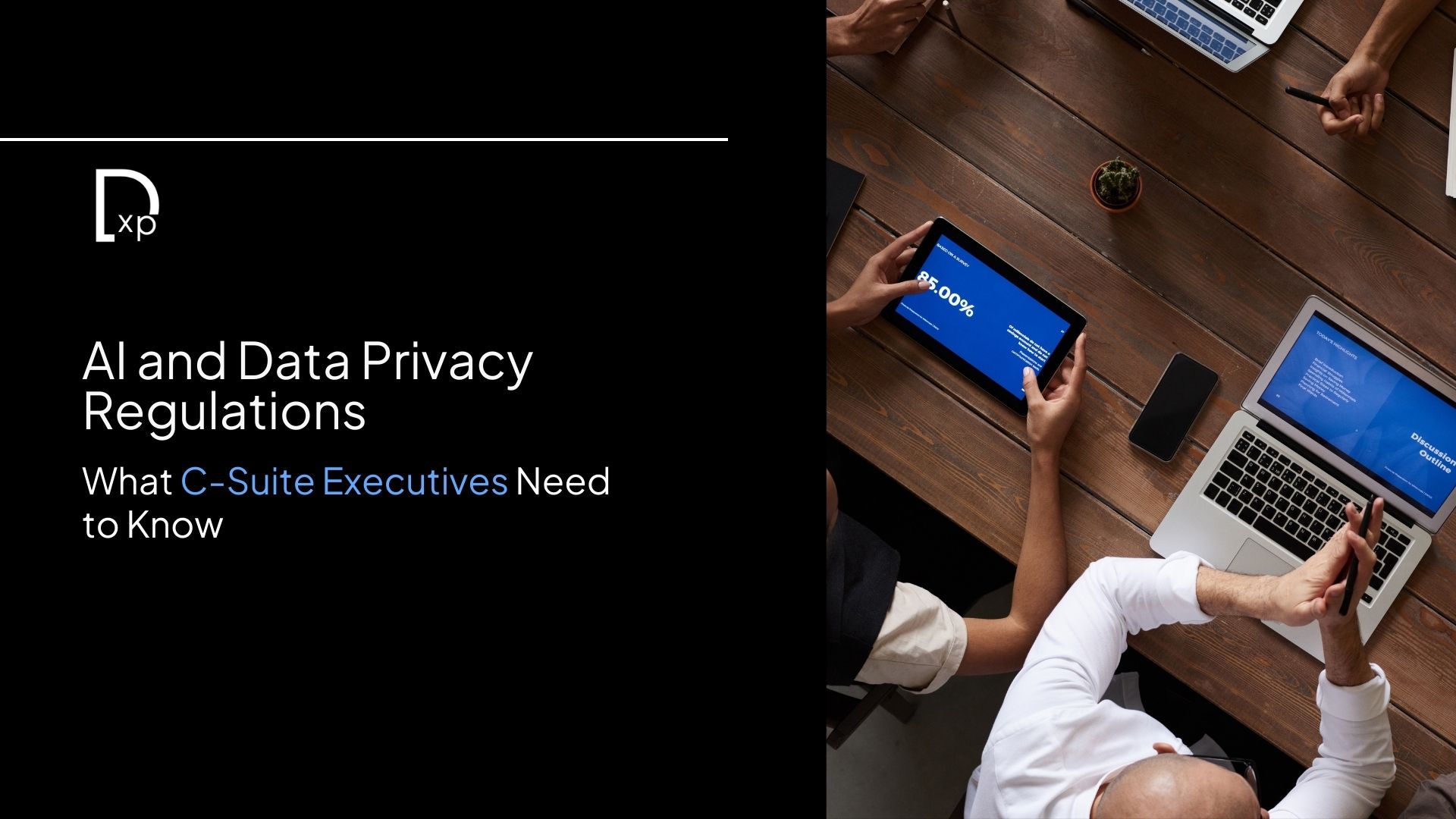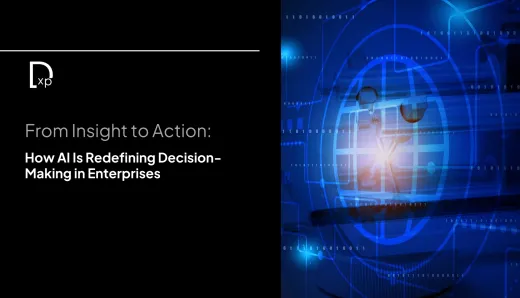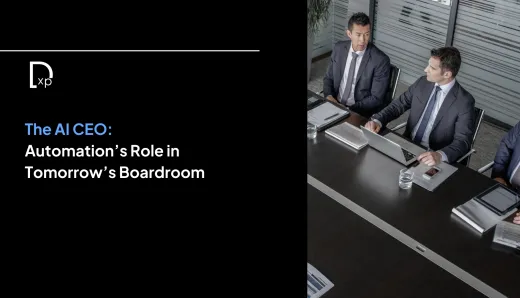AI and Data Privacy Regulations: What Every C-Suite Executive Should Know

As artificial intelligence rapidly matures from experimental innovation to core enterprise infrastructure, data privacy is no longer just a compliance concern—it’s a boardroom imperative. For C-suite executives, the convergence of AI and data privacy regulations represents both a strategic risk and a competitive differentiator. The choices made today will determine not only an organization’s legal exposure, but also its capacity to build trust, scale innovation, and lead responsibly in a data-driven economy.
Understanding this shifting landscape is critical. Executives don’t need to become data scientists or privacy lawyers, but they must grasp how AI systems interact with personal data, what regulations demand, and where the blind spots in governance often lie. The stakes are high, and ignorance is no longer an option.
The Regulatory Landscape Is Evolving—Fast
One of the most pressing challenges for executives is the sheer speed and complexity of regulatory change around AI and data privacy. The European Union’s General Data Protection Regulation (GDPR) was just the beginning. It introduced concepts like data minimization, user consent, and algorithmic transparency that now serve as global benchmarks. But the bar is rising.
The forthcoming EU AI Act, for example, goes beyond privacy and into the very architecture of AI development—classifying systems by risk and imposing strict obligations on “high-risk” AI. These include systems that affect people’s rights, safety, or livelihoods, such as those used in hiring, finance, healthcare, or law enforcement. Noncompliance could lead to fines of up to 6% of global turnover.
Meanwhile, U.S. states such as California (CPRA), Virginia (VCDPA), and Colorado (CPA) are enacting privacy laws that demand rigorous data handling practices, clear opt-out mechanisms, and algorithmic accountability. In Asia, data localization rules in China and sector-specific mandates in India are adding another layer of complexity.
For the C-suite, this patchwork of global rules means one thing: privacy strategy must be proactive, not reactive. Compliance is no longer about checking boxes. It’s about integrating regulatory foresight into every AI initiative, product roadmap, and market expansion plan.
Why Data Privacy Is a Strategic Business Issue
Beyond the regulatory risk, data privacy now plays a central role in brand trust and digital transformation. Consumers are increasingly aware of how their data is used—and more willing to abandon brands that don’t respect their rights. At the same time, AI systems that mishandle data can trigger public backlash, legal investigations, and long-term reputational damage.
Consider the risks of biased algorithms, opaque decision-making, or unauthorized data sharing. When AI goes wrong, it’s not just a tech failure—it’s a board-level crisis. Think of algorithmic discrimination in hiring, AI-generated misinformation, or personal data leaks from poorly trained chatbots. These aren’t theoretical concerns; they’ve already made headlines, cost companies millions, and prompted regulatory scrutiny.
For C-level leaders, the lesson is clear: data privacy isn’t a technical footnote—it’s a core business risk that must be managed with the same rigor as financial or operational threats. CEOs, CIOs, and Chief Data Officers must collaborate to ensure privacy and security are embedded in every AI use case from day one.
Privacy-First Innovation: Turning Compliance into Competitive Edge
There’s a silver lining here—and it’s a big one. Companies that lead on privacy don’t just avoid penalties; they gain market advantage. Privacy-first design, responsible AI development, and transparent data practices are fast becoming brand assets.
This is especially true as enterprise clients, investors, and regulators begin demanding proof of ethical data stewardship. A transparent, accountable AI pipeline can be a differentiator in deal negotiations, vendor selection, and customer acquisition. In B2B markets, demonstrating compliance with global data privacy standards is increasingly a prerequisite for entering regulated industries.
From a strategic standpoint, this means privacy and AI ethics should be part of the innovation agenda—not just the legal checklist. Leading companies are deploying privacy-enhancing technologies (PETs), such as federated learning, differential privacy, and secure multiparty computation, to reduce risk while maintaining data utility.
Moreover, executives are setting up internal governance councils, investing in algorithm audits, and appointing Chief AI Ethics Officers to oversee emerging risks. These steps don’t stifle innovation—they make it scalable, sustainable, and defensible in a high-stakes regulatory environment.
Building an AI Governance Framework at the Executive Level
Effective oversight starts with clear governance. Executives should ensure that their organizations have robust AI and data privacy frameworks in place. This includes defining roles and responsibilities, ensuring cross-functional collaboration between legal, compliance, data science, and product teams, and implementing regular risk assessments.
Accountability must start at the top. Boards and executive teams should demand transparency not only in outcomes but in process—how data is collected, what it’s used for, how models are trained, and how decisions are explained to users. Third-party audits, bias testing, and model documentation should become routine, not optional.
Finally, education is essential. The C-suite must stay informed on evolving regulations, emerging technologies, and best practices in responsible AI. This may require upskilling, executive briefings, or external advisory support—but it’s a necessary investment in long-term resilience.
The Path Forward: Leadership Through Responsibility
AI is redefining how organizations operate, compete, and grow—but it’s also redefining what it means to lead responsibly. In this new reality, data privacy is not just a compliance issue for lawyers or a technical issue for engineers. It’s a leadership issue that touches every aspect of strategy, culture, and risk.
C-suite executives who understand the intersection of AI and data privacy will be better positioned to navigate regulatory uncertainty, earn public trust, and unlock the full potential of intelligent systems. The path forward is clear: lead with transparency, innovate with responsibility, and govern with integrity.
In the age of AI, leadership is measured not just by how fast you move, but by how responsibly you build.




